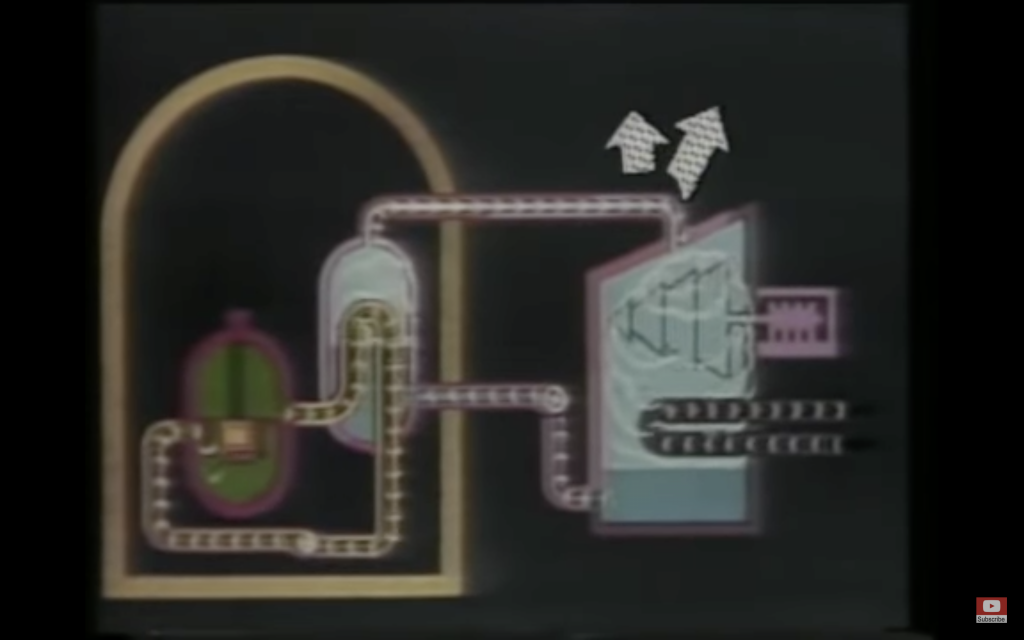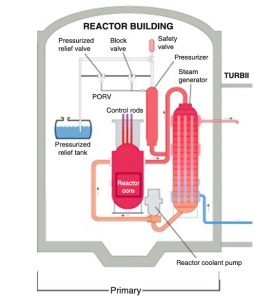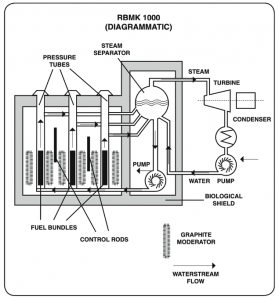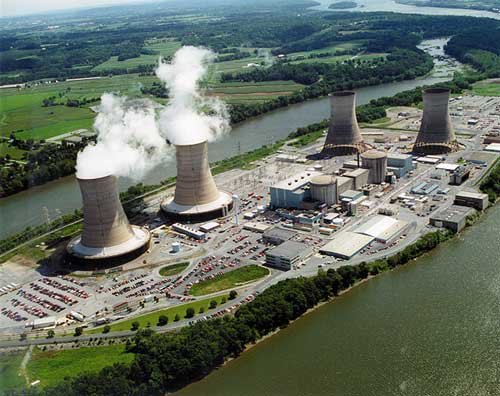Seven years prior to the Chernobyl accident, the worst nuclear power disaster in US history occurred at the Three Mile Island nuclear power plant (pictured at the top of this page) outside of Harrisburg, PA. Reactor No. 2 at the Three Mile Island plant had only been open for three months, and on the morning of March 28, 1979 the reactor was running at close to full power (Filburn 2016, 34). A malfunction in reactor No. 2’s cooling system resulted in a cascade of events that destabilized the reactor core (Perrow 1999, 16-17).
Although the issues should have been manageable, the plant operators made a series of mistakes that continued to destabilize the reactor. The cooling system malfunction was a relatively minor issue, but the plant operators were generally under-skilled and had only received training for a worst-case scenario malfunction. As a result, the operators did not know how to respond when “they were bombarded with a huge amount of warning information” (Filburn 2016, 35-37). A subsequent buildup of heat and pressure caused the turbine steam release valve to blow and release radioactive noble gases, which do not pose significant health or environmental risks (Filburn 2016, 40). In addition to the release of radioactive gases, reactor No. 2’s fuel rods were destroyed, but no one was seriously harmed and radiation exposure to those residing near Three Mile Island was minimal (Filburn 2016, 40-41).

abcNews Three Mile Island, Nuclear Power Plant Accident: March 28, 1979. CLICK the image above or use the following link for a short description of what happened in reactor No. 2 https://youtu.be/eGI7VymjSho?t=195
Both the Chernobyl and the Three Mile Island accidents occurred with the backdrop of the Cold War. Throughout the world there were significant anxieties about potential nuclear fallouts in the event of nuclear war, and the US and USSR were rapidly developing nuclear power technology for civilian energy production. Additionally, prior to both nuclear power accidents, the US and the USSR were both facing economic stress. In the late 1970s oil prices and inflation were both high in the US, and by the mid-1980s, the Soviet economy had largely stagnated after the Brezhnev era (Hunt 2006, 62; Tompson 2003, 81). Although the US and the USSR were working to have the most advanced nuclear technology, both countries’ nuclear power industries were under economic stress when their respective accidents occurred.
Furthermore, economic limitations at Three Mile Island and Chernobyl resulted in both plants having undersized and overworked staffs (Perrow 1999, 16; Marples 1987, 325). To make matters more precarious, plant operators lacked deep technical knowledge and understanding of the reactors at both Chernobyl and Three Mile Island (Filburn 2016). These workforce issues at the two plants ultimately led to a series of human errors in part caused both nuclear accidents. As the accidents were unfolding, plant operators at Chernobyl and Three Mile island were unable to interpret and properly respond to warning signs, suggesting that the reactor core was overheating (Filburn 2016). Instead, inexperienced operators continued to make mistakes, which exacerbated unstable conditions in the reactors, and eventually led to meltdowns.
While human factors played similar roles in the Chernobyl and Three Mile Island accidents, the nuclear power reactor design was quite different between Chernobyl and Three Mile Island. Notably, the pressurized water reactor (PWR) at Three Mile Island had critical safety features, which the RBMK reactor at Chernobyl lacked. While Three Mile Island’s reactor had a concrete containment structure that “successfully prevented the release of almost all radioactive material,” the Chernobyl reactor had no containment structure because it was too expensive to add (Filburn 2016, 57-58). Moreover, the Three Mile Island reactor had a negative core power feedback coefficient, so that the reactor’s automatic systems tended to decrease power in the reactor core when errors occurred. In contrast, the Chernobyl reactor had a positive core power feedback coefficient under certain conditions. This feature contributed to rapid loss of control of the Chernobyl reactor core’s power whereas operators were able to maintain more control of the Three Mile Island reactor (Filburn 2016). Because of the safety features in the Three Mile Island reactor, catastrophic consequences were avoided. Unfortunately, Chernobyl turned out to be the global scale nuclear catastrophe that was narrowly avoided at Three Mile Island.

PWR reactor schematic from Three Mile Island, Chernobyl and Fukushima: Curse of the Nuclear Genie. Unlike RMBK reactors PWR reactors are encapsulated by a heavy-duty containment structure (Filburn 2016, 33).

Schematic of the RBMK 1000 reactor, which was the type used in Chernobyl. Key to the design was the lack of containment structure. Diagram from Three Mile Island, Chernobyl and Fukushima: Curse of the Nuclear Genie (Filburn 2016, 57).
Overall, the similarities between the Chernobyl and Three Mile Island accidents highlight the role of humans in these complex technological systems. Scholar Najmedin Meshkati points out that complex, technological systems “require human operators to constantly adapt to new and unforeseen system and environmental demands” (Meshkati 1991, 137). As errors occur, human operators cannot be expected to make the correct decisions one hundred percent of the time. Therefore, catastrophic disasters can be expected to occur as industrial systems become more complex overtime.
That being said, different historical conditions on either side of the Cold War had significant impacts on the severity of the two disasters. At the time of the accidents, the US and the USSR were both experiencing economic stress. But in the US public questioning of the nuclear power industry’s safety was commonplace whereas public scrutiny of nuclear power was completely “absent” in the USSR (Josephson 2005, 4). Accordingly, reactors in the US were designed with more safety features while reactors in the USSR were designed more cost efficient, and fundamental differences in reactor design led to vastly different consequences after the two reactors melted down.
